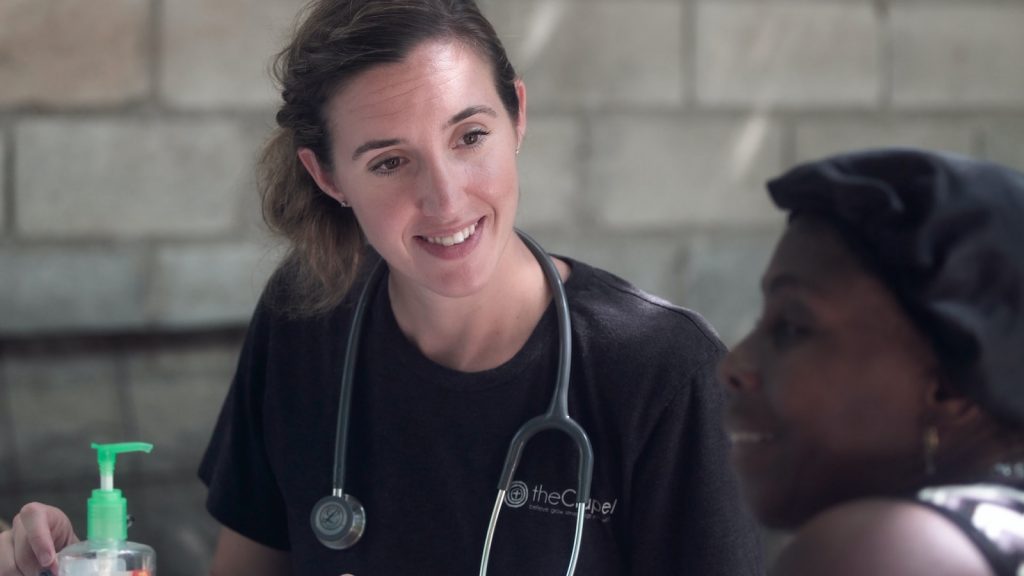Introduction: The Importance of Safe Learning Environments in Schools
Creating a safe learning environment is crucial for the well-being and success of both students and staff in schools. When students feel safe and secure, they are more likely to engage in their education, form positive relationships, and achieve academic success. Similarly, when staff members feel safe, they can focus on their roles as educators and provide the support and guidance that students need. School safety encompasses various aspects, including physical security, emergency preparedness, and prevention strategies. By implementing comprehensive safety measures, schools can ensure that everyone within the learning community feels protected and supported.
The impact of school safety on academic achievement and student well-being cannot be overstated. When students feel unsafe or threatened in their learning environment, it can have a detrimental effect on their ability to concentrate, learn, and develop socially. Research has shown that students who experience violence or bullying at school are more likely to have lower academic achievement and suffer from mental health issues such as anxiety and depression. On the other hand, when students feel safe and supported, they are more likely to thrive academically and emotionally. Therefore, creating a safe learning environment is not only a moral imperative but also an essential component of promoting student success.
Understanding the Different Types of School Safety Measures
To create a safe learning environment, schools must implement various types of safety measures. These measures include physical security, emergency preparedness, and prevention strategies. Physical security measures involve securing school buildings and grounds to prevent unauthorized access and protect students and staff from potential threats. This can include installing surveillance cameras, implementing access control systems, and conducting regular security audits.
Emergency preparedness involves developing plans and procedures to respond effectively to emergencies such as natural disasters or active shooter incidents. This includes conducting drills and training sessions for staff and students, establishing communication protocols, and coordinating with local law enforcement agencies.
Prevention strategies focus on creating a positive school climate and addressing potential risks before they escalate. This can include implementing anti-bullying programs, promoting conflict resolution skills, and providing mental health support services. By taking a comprehensive approach to school safety, schools can address potential risks from multiple angles and create a secure and supportive learning environment.
Conducting a Comprehensive School Safety Assessment
Before implementing safety measures, it is essential for schools to conduct a comprehensive safety assessment. This assessment helps identify potential risks and vulnerabilities within the school environment. Key areas to assess include physical security, emergency preparedness, and prevention strategies.
In terms of physical security, schools should evaluate the effectiveness of existing security measures such as access control systems, surveillance cameras, and perimeter fencing. They should also assess the layout of the school buildings and grounds to identify any potential vulnerabilities or blind spots.
Emergency preparedness assessments involve reviewing existing emergency plans and procedures to ensure they are up-to-date and align with best practices. Schools should also assess their communication systems and protocols to ensure effective communication during emergencies.
When assessing prevention strategies, schools should evaluate their current programs and initiatives aimed at promoting a positive school climate and preventing bullying and violence. This includes reviewing policies, procedures, and curriculum materials related to bullying prevention, conflict resolution, and mental health support.
By conducting a comprehensive safety assessment, schools can identify areas for improvement and develop targeted strategies to enhance safety within their learning environment.
Developing a School Safety Plan: Key Considerations and Best Practices
Developing a school safety plan is a critical step in creating a safe learning environment. When developing a plan, there are several key considerations and best practices to keep in mind.
Firstly, it is important to involve stakeholders in the planning process. This includes administrators, teachers, staff members, students, parents, and community members. By involving all relevant parties, schools can ensure that the safety plan reflects the needs and concerns of the entire learning community.
Secondly, the plan should be comprehensive and address all aspects of school safety, including physical security, emergency preparedness, and prevention strategies. It should outline clear goals and objectives, as well as specific action steps to achieve those goals.
Additionally, the plan should be regularly reviewed and updated to reflect changing threats and risks. School safety is an ongoing process, and it is important to adapt the plan as needed to address emerging challenges.
Finally, the plan should be communicated effectively to all stakeholders. This includes providing training and resources to staff members, students, and parents. By ensuring that everyone is aware of the safety plan and their roles within it, schools can enhance the effectiveness of their safety measures.
Implementing School Safety Policies and Procedures: Tips for Success
Implementing school safety policies and procedures requires careful planning and coordination. Here are some tips for successfully implementing these measures:
1. Communication: Effective communication is key to ensuring that everyone within the learning community understands the importance of school safety and their roles in maintaining it. Schools should establish clear channels of communication and regularly update stakeholders on safety policies and procedures.
2. Training: Providing training for staff members, students, and parents is crucial for ensuring that everyone knows how to respond in emergency situations. This can include conducting drills, workshops, and informational sessions on topics such as evacuation procedures, first aid, and recognizing signs of potential threats.
3. Collaboration: Schools should collaborate with local law enforcement agencies, emergency responders, and community organizations to enhance school safety efforts. This can involve sharing information, coordinating drills and exercises, and developing partnerships to address specific safety concerns.
4. Evaluation: Regularly evaluating the effectiveness of school safety policies and procedures is essential for continuous improvement. Schools should collect feedback from stakeholders, conduct audits and assessments, and make necessary adjustments based on the findings.
By following these tips, schools can ensure that their safety policies and procedures are effectively implemented and contribute to a safe learning environment.
Building Strong Partnerships with Law Enforcement and Community Organizations
Building strong partnerships with law enforcement agencies and community organizations is crucial for enhancing school safety. These partnerships can provide valuable resources, expertise, and support to schools in their efforts to create a safe learning environment.
Law enforcement agencies can offer guidance on security measures, conduct threat assessments, and provide training for staff members and students. They can also assist with emergency response planning and coordinate drills and exercises.
Community organizations, such as mental health providers, youth organizations, and local businesses, can contribute to school safety efforts by offering resources and support. For example, mental health providers can offer counseling services to students, while youth organizations can provide after-school programs that promote positive social interactions.
By collaborating with law enforcement and community organizations, schools can tap into a wide range of expertise and resources that can enhance their safety measures and contribute to a safer learning environment.
Enhancing Physical Security: Effective Measures for Securing School Buildings and Grounds
Enhancing physical security is an essential aspect of creating a safe learning environment. Schools can implement various measures to secure their buildings and grounds effectively.
One effective measure is the installation of surveillance cameras. Cameras can deter potential threats and provide valuable evidence in the event of an incident. They should be strategically placed in areas such as entrances, hallways, and parking lots.
Access control systems are another important physical security measure. These systems can include key cards, biometric scanners, or keypad entry systems that restrict access to authorized individuals only. By controlling who enters the school buildings, schools can prevent unauthorized individuals from posing a threat to students and staff.
Perimeter fencing is another effective measure for securing school grounds. Fencing should be sturdy and well-maintained to prevent unauthorized access. Additionally, schools should consider implementing visitor management systems that require all visitors to check-in at the main office before entering the school premises.
It is important to note that while enhancing physical security is crucial, schools should also strive to maintain a welcoming and inclusive environment. Security measures should be balanced with the need to create a positive and nurturing learning environment.
Promoting a Positive School Climate: Strategies for Preventing Bullying and Violence
Promoting a positive school climate is essential for preventing bullying and violence. Schools can implement various strategies to create a culture of respect, inclusion, and support.
One strategy is the implementation of anti-bullying programs. These programs can include curriculum materials, workshops, and awareness campaigns that educate students about the harmful effects of bullying and provide them with strategies to prevent and respond to bullying incidents.
Conflict resolution programs are another effective strategy for promoting a positive school climate. These programs teach students how to resolve conflicts peacefully and respectfully. By equipping students with these skills, schools can reduce the likelihood of conflicts escalating into violence.
Creating a culture of respect and inclusion involves fostering positive relationships among students, staff members, and parents. Schools can achieve this by promoting open communication, encouraging empathy and understanding, and celebrating diversity.
By implementing these strategies, schools can create an environment where all students feel safe, valued, and supported.
Providing Training and Professional Development for Staff and Students
Providing training and professional development opportunities for staff members and students is crucial for enhancing school safety. By equipping individuals with the necessary knowledge and skills, schools can ensure that everyone knows how to respond effectively in emergency situations.
Staff members should receive training on topics such as emergency response procedures, first aid, crisis management, and recognizing signs of potential threats. This training should be ongoing to ensure that staff members are up-to-date on the latest best practices.
Students should also receive training on emergency response procedures, as well as skills such as conflict resolution, empathy, and bystander intervention. This training can be incorporated into the curriculum or delivered through workshops or assemblies.
In addition to training, schools should provide ongoing professional development opportunities for staff members. This can include workshops, conferences, and online courses that focus on topics such as school safety, mental health support, and crisis intervention.
By investing in training and professional development, schools can empower staff members and students to contribute to a safe learning environment.
Evaluating and Improving School Safety: Continuous Improvement Strategies for Ensuring Safe Learning Environments
Evaluating and improving school safety is an ongoing process that requires continuous monitoring and adaptation. Schools should implement strategies to evaluate the effectiveness of their safety measures and make necessary improvements.
One strategy is to collect feedback from stakeholders. This can be done through surveys, focus groups, or meetings with staff members, students, parents, and community members. By gathering feedback, schools can gain valuable insights into the strengths and weaknesses of their safety measures.
Schools should also conduct regular audits and assessments of their safety policies and procedures. This can involve reviewing documentation, conducting physical inspections, and analyzing data related to safety incidents. By identifying areas for improvement, schools can make targeted adjustments to enhance their safety measures.
It is important for schools to stay informed about emerging threats and risks. This can be done through regular communication with law enforcement agencies, participation in training sessions and conferences, and staying up-to-date on relevant research and best practices.
By continuously evaluating and improving school safety measures, schools can ensure that they are providing a safe learning environment for all students and staff members.
Conclusion:
Creating and maintaining safe learning environments in schools is of utmost importance for the well-being and success of students and staff. By implementing comprehensive safety measures that encompass physical security, emergency preparedness, and prevention strategies, schools can ensure that everyone within the learning community feels protected and supported.
To achieve this goal, schools must conduct a comprehensive safety assessment to identify potential risks and vulnerabilities. They should develop a school safety plan that involves stakeholders and reflects the needs and concerns of the entire learning community. Implementing school safety policies and procedures requires effective communication, training, and collaboration with law enforcement and community organizations.
Enhancing physical security, promoting a positive school climate, providing training and professional development, and continuously evaluating and improving school safety measures are all essential components of creating and maintaining safe learning environments. By prioritizing school safety, schools can create an environment where students can thrive academically, socially, and emotionally.




